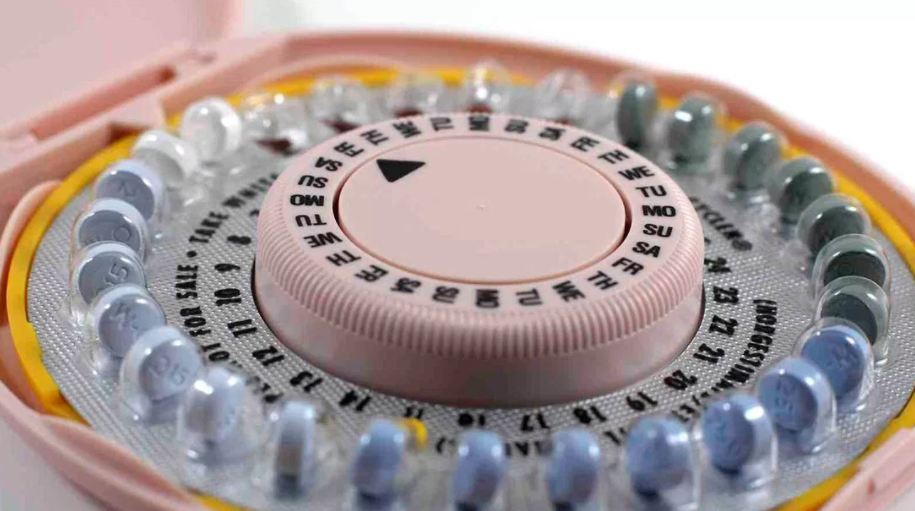Since the dawn of civilization people have been trying to prevent unwanted pregnancies. From eating specific foods to coitus interruptus (latin for the withdrawal method) humans have tried hundreds of methods, only a few of which actually work most of the time. Today we take prophylactic measures like birth control pills and latex condoms for granted, but for most of human history, people had to be a bit more creative.
One of the earliest forms of documented birth control was a mass of lint or gauze, acacia leaves, and honey that Egyptian women would use to block sperm from reaching the uterus. Egyptian women were also fond of using crocodile dung mixed with fermented dough as a contraceptive measure. Sounds like it could get a bit messy, but hey, whatever works.
Stone pessaries were also used by Romans to block the sperm from getting through the cervix. Later civilizations preferred softer material, such as wool, balls of bamboo tissue paper, rags, and silk. Today’s diaphragm is modeled off these ancient methods, but luckily it’s a lot easier to clean. Can you imagine taking a silk diaphragm to the dry cleaner’s? Neither can I.
Legend has it that the silphium plant (otherwise known as laserwort) was such a sought-after contraceptive in ancient Greece that massive overharvesting led to its extinction in the second or third century B.C. This was just one of many “natural” remedies women ingested to prevent pregnancy. Ancient Chinese women used to drink lead and mercury in small amounts to stave off conception; the key was to take enough to prevent pregnancy but not poison yourself. A delicate balance indeed.
During the Middle Ages, coitus interruptus, whereby the man pulls out before ejaculaction, came into vogue. While the story of Onan in the Book of Genesis describes this method, the Bible doesn’t actually condone it. In fact, a few pages in, God smote Onan and put an end to his whole situation. Despite the low success rate of the pullout method, as it’s known today, it probably beat wearing a chastity belt or simple abstinence, which was also popular. Of course, abstinence only works if you actually practice it, and many men ended up turning to sex workers instead of their wives. Sigh.
Magical thinking was also quite trendy during the Middle Ages. Got some weasel balls handy? Put those suckers on a necklace around your thigh and hope for the best. Same thing goes for dried cat liver, dismembered hares and cat bones (but only black cats, natch.) If you happen to live near a forest populated by wolves, find a pregnant wolf and walk three times around a spot she has peed upon. Even if you still get pregnant it will be good for you to get some exercise and fresh air.
To be fair, not all of the methods practiced by women of yore were pure bunk. Eating papaya as a prophylactic fruit was quite popular in tropical regions, and recent medical studies have shown that it does indeed contain an enzyme (papain) with preventative properties. It “works” because of the way the enzyme interacts with female hormones.
It is believed that the first condoms were used in the 17th century. They were made of animal stomach and no one really knows how effective they were. However, if you’d like to try one for yourself, sheep intestine condoms are available for purchase today. Just be forewarned that these bad boys don’t protect against STDs, only pregnancy. The condom as we recognize it today became popular after Charles Goodyear and his marvelous invention of vulcanized rubber came onto the scene in the mid 1800’s. Rubber also became a favored material for pessaries, sold at pharmacies to “support the uterus.” Right.
It was not until the 1950’s that women finally had the option of reliable pregnancy prevention methods that were completely under their control: enter the IUD (intrauterine device) and the pill. You can thank Margaret Sanger for the pill. Without her decades-long devotion to providing safe, reliable contraceptive options for women, it may never have come into being. The pill works by releasing a combination of hormones (estrogen and progesterone) to stop a woman from ovulating, and to thicken her cervical mucus. It essentially tricks the body into thinking it’s pregnant. Today’s birth control pills have far lower doses of hormones (especially pills specifically formulated to be “low-dose” like Yasmin and Yaz, among others), and are generally considered quite safe for most women.
The IUD was another option for sexually liberated women of the mid-twentieth century. This T-shaped plastic device prevents pregnancy in two ways: the version containing copper acts as a spermicide, and the hormonal version releases progestin to thicken the cervical mucus, preventing the sperm from reaching the egg.
However, the IUD’s entry into the market was not without speed bumps. Remember when tampons earned a bad rap because of exaggerated fear of toxic shock syndrome (TSS)? The IUD underwent something similar thanks to a product called the Dalkon Shield. As IUDs gained popularity in the 70’s, millions of women relied on it as a reliable way to prevent pregnancy without the daily annoyance of remembering to take a pill. Unfortunately, misinformation about removal during pregnancy resulted in deadly infections for several ill-fated women. In addition, the Dalkon Shield was linked to hundreds of cases of PID (pelvic inflammatory disease), which can lead to infertility. Luckily, today’s IUDs are far more advanced and are a safe, effective pregnancy prevention method.
Today, women in developed countries have access to a plethora of options for pregnancy prevention. While medical science has yet to deliver a form of hormone-related male birth control, the future is looking bright. That’s right guys. Welcome to the 21st century.
From IUDs to hormone patches to easily cleanable diaphragms, many women are free to choose what works best for them. Happily for women, birth control methods have come a long way since people first believed that crocodile dung would stop pregnancy. Who knows what technology researchers will develop next?











